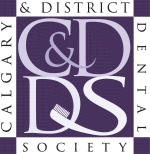
- This event has passed.
Risk Assessment – Diagnosis Driven Treatment
November 19, 2016 @ 8:30 am - 4:00 pm
Risk Assessment – Diagnosis-Driven Treatment
The increasing amount of information that practitioners are required to assimilate when establishing a diagnosis and developing a treatment plan brings with it an increasing amount of complexity for both practitioners and their patients. Formulating treatment decisions based on what is truly important to the long-term success of treatment can at times be daunting. Striving to eliminate the weak links to long-term success helps to establish priorities when making treatment planning decisions. Patients need to understand the need for treatment as well as the importance of addressing parameters such as periodontal disease or functional concerns which are not currently impacting their lives, but could eventually impact treatment success.
- Learn to focus on establishing an accurate diagnosis that takes into consideration a patient’s susceptibility to disease.
- Learn a simplified diagnostic approach that incorporates all functional and physiologic factors that can affect a patient’s long-term prognosis.
- Learn to make use of a variety of disciplines to move treatment toward reducing or minimizing risk and thereby increase the probability of a successful long-term result.
- Learn to incorporate functional, structural and periodontal considerations into developing a treatment plan.
- Learn how to effectively incorporate esthetics into a comprehensive diagnosis.
- Understand smile analysis and its importance in guiding treatment decisions.
- Learn the esthetic and morphologic factors that influence ideal gingival architecture.
Occlusion – Diagnosis-Driven Management
Have you ever wondered why a patient who faithfully wears a night guard still finds their teeth wearing and their restorations chipping? Why do some people have wear on both their anterior and posterior teeth and other people just exhibit wear on their anterior teeth and the posterior teeth remain unchanged? Why some areas of wear flat and other areas involve cupping of the dentin? This course will address these questions and more. By discussing the four functional diagnoses which every dentist should be familiar and the different treatment approaches that are required in order to assure long-term success dentists will become better equipped to incorporate occlusion into their diagnosis and treatment protocols.
- Understand the various functional diagnoses and how they relate to risk and prognosis
- Learn treatment approaches that manage or reduce functional risk and improve long-term prognosis
- Recognize the variety of factors that contribute to tooth wear
Tickets Limited:
500 tickets for Members
160 tickets for Staff
Tickets
Please login to register for this event.



